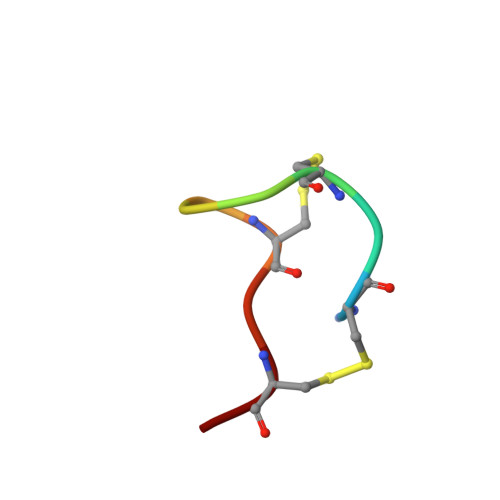Solution structures and integrin binding activities of an RGD peptide with two isomers.
Assa-Munt, N., Jia, X., Laakkonen, P., Ruoslahti, E.(2001) Biochemistry 40: 2373-2378
- PubMed: 11327857
- DOI: https://doi.org/10.1021/bi002101f
- Primary Citation of Related Structures:
1FUL, 1FUV - PubMed Abstract:
The Arg-Gly-Asp (RGD) sequence serves as the primary integrin recognition site in extracellular matrix proteins, and peptides containing this sequence can mimic the activities of the matrix proteins. Depending on the context of the RGD sequence, an RGD-containing peptide may bind to all of the RGD-directed integrins, to a few, or to only a single one. We have previously isolated from a phage-displayed peptide library a cyclic peptide that binds avidly to the alpha(v)beta3 and alpha(v)beta5 integrins but does not bind to other closely related integrins. This peptide, ACDCRGDCFCG, exists in two natural configurations depending on internal disulfide bonding. The peptide with the 1-4; 2-3 disulfide bond arrangement accounts for most of the alpha(v) integrin binding activity, whereas the 1-3; 2-4 peptide is about 10-fold less potent. Solution structure analysis by nuclear magnetic resonance reveals an entirely different presentation of the RGD motif in the two isomers of RGD-4C. These results provide new insight into the ligand recognition specificity of integrins.
Organizational Affiliation:
Cancer Research Center, The Burnham Institute, 10901 North Torrey Pines Road, La Jolla, California 92037, USA. nuria@burnham.org














